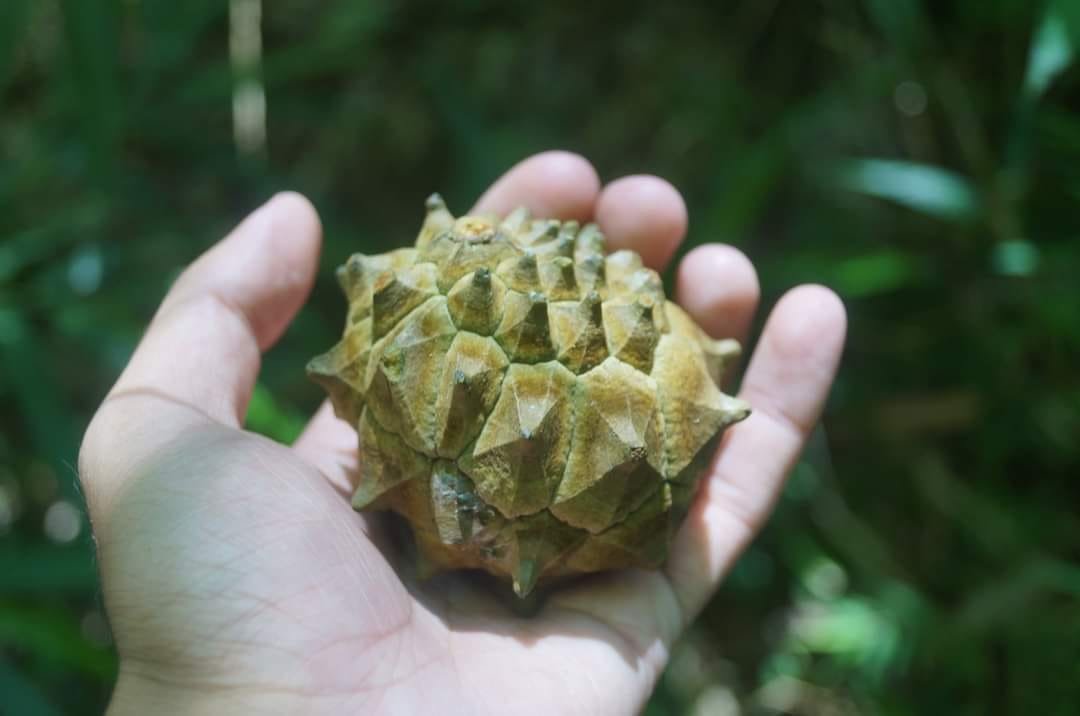Duguetia Salicifolia
Seeds were imported from Brazil. Although the fruit of this species is large, it has very little aril or pulp, but this is due to the fact that the plant is wild and has never been cultivated or domesticated. Endemic to the Paranapiacaba mountain range, only occurs in the Atlantic forest (dense rainforest) in the state of São Paulo. Fruits from September to December. The tree must be grown in botanical gardens, tree collections and orchards for its preservation. It is important to include in the forest restoration because it is a climax tree (long-lived) and because it has a large production of fruits that feed terrestrial fauna in general. The fruits can be consumed fresh, removing the segments and absorbing the orange part, which has a good flavor. The fruits of this species have great potential for commerce and mainly for decoration of gastronomic events due to their rare beauty and flavor. As it is a species that is at risk of becoming extinct, it is extremely important that it is planted and preserved. It is extremely important to cultivate this species to save it from extinction. Seeds are shipped in humid vermiculite.
Seeds were imported from Brazil. Although the fruit of this species is large, it has very little aril or pulp, but this is due to the fact that the plant is wild and has never been cultivated or domesticated. Endemic to the Paranapiacaba mountain range, only occurs in the Atlantic forest (dense rainforest) in the state of São Paulo. Fruits from September to December. The tree must be grown in botanical gardens, tree collections and orchards for its preservation. It is important to include in the forest restoration because it is a climax tree (long-lived) and because it has a large production of fruits that feed terrestrial fauna in general. The fruits can be consumed fresh, removing the segments and absorbing the orange part, which has a good flavor. The fruits of this species have great potential for commerce and mainly for decoration of gastronomic events due to their rare beauty and flavor. As it is a species that is at risk of becoming extinct, it is extremely important that it is planted and preserved. It is extremely important to cultivate this species to save it from extinction. Seeds are shipped in humid vermiculite.
Seeds were imported from Brazil. Although the fruit of this species is large, it has very little aril or pulp, but this is due to the fact that the plant is wild and has never been cultivated or domesticated. Endemic to the Paranapiacaba mountain range, only occurs in the Atlantic forest (dense rainforest) in the state of São Paulo. Fruits from September to December. The tree must be grown in botanical gardens, tree collections and orchards for its preservation. It is important to include in the forest restoration because it is a climax tree (long-lived) and because it has a large production of fruits that feed terrestrial fauna in general. The fruits can be consumed fresh, removing the segments and absorbing the orange part, which has a good flavor. The fruits of this species have great potential for commerce and mainly for decoration of gastronomic events due to their rare beauty and flavor. As it is a species that is at risk of becoming extinct, it is extremely important that it is planted and preserved. It is extremely important to cultivate this species to save it from extinction. Seeds are shipped in humid vermiculite.







